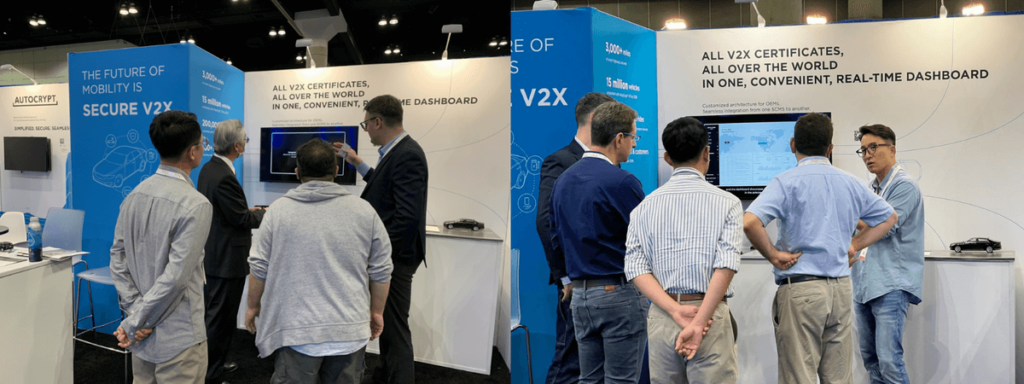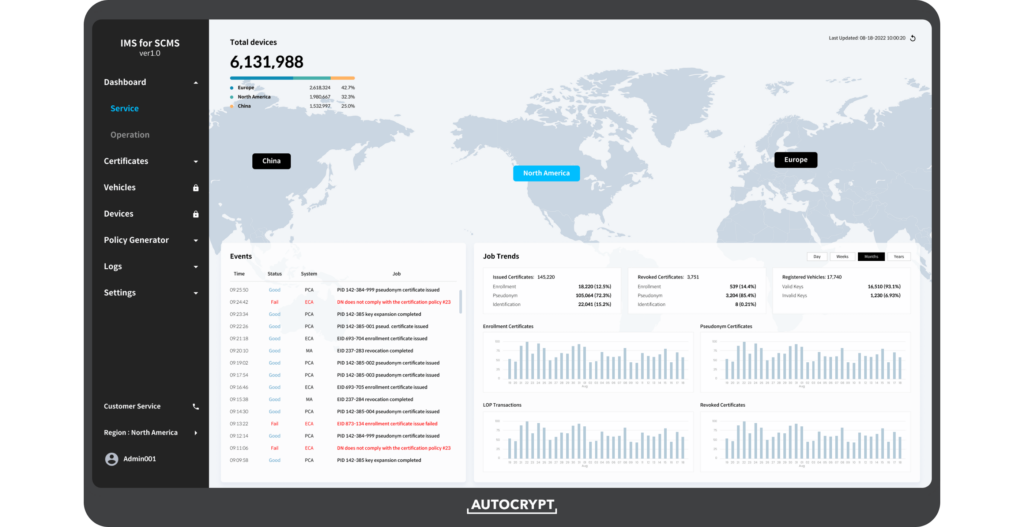Electric vehicles (EV) are some of the hottest items today across the automotive and tech industries. With EV adoption accelerating year by year, there is no doubt now that EVs are on their way to take over the automotive market. However, with new EV releases and feature updates gathering all the spotlights, a complementary market — the market for EV charging infrastructure — is often overlooked.
EV charging infrastructure, or EV supply equipment (EVSE), refers to the charging stations and charging points that supply electricity to an EV’s battery. Clearly, the development and commercialization of EVs and EV charging infrastructure must go hand in hand. Knowing that EVs cannot thrive without decent charging infrastructure, automotive OEMs are constantly working with charger manufacturers and charge point operators (CPO) to bring smarter and faster charging infrastructure to the market, creating an environment that enables EVs to reach their maximum potential.
The question is: is the EVSE industry prepared to fulfill the massive influx of EVs over the coming years?
Private vs. Public Charging Infrastructure
Although a privately owned home charger is most likely the primary charger for the average EV owner, the long-term sustainability of the EV market depends heavily on the availability of public charging infrastructure. With a significant portion of urban residents living in apartments and condos with shared parking garages, public chargers must be adequately established to fulfill the growing charging demands. Moreover, for the times when longer trips are made, public EV chargers must be easily accessible en route. Therefore, to enable a seamless EV user experience, public charging infrastructure must be established on a wide scale.
The development and deployment process for private and public chargers vary significantly. Unlike a home charger, which simply contains electrical conductors and their related equipment, a public charger is much more complex, containing software for processing account information and billing, and communication protocols that deliver data between the vehicle and the charger. These software-enabled features make them more expensive and time-consuming to deploy and maintain.
The Current State of Public Charging Infrastructure
Overall, the market for public EV charging infrastructure has been growing at a steady rate. As of 2021, the United States has about 115,000 publicly accessible EV charging points, just surpassing its number of gas stations. Realizing that public charging infrastructure is crucial to EV adoption and achieving carbon emission targets, President Biden’s Bipartisan Infrastructure Law has dedicated $7.5 billion to developing publicly accessible EV charging points, with the goal of installing 500,000 additional public EV chargers compatible with all kinds of vehicles by 2030.
However, are 500,000 additional public chargers enough to fulfill the forecasted growth of EVs? To put the numbers in perspective, the US has a goal of cutting its road transport carbon emission by half in 2030. To reach this target, roughly one in every two new cars sold in 2030 must be an EV. However, according to research by McKinsey, if half of all new vehicles sold were to be EVs in 2030, the US would need 1.2 million public EV chargers by that year, meaning that even with 500,000 additional public chargers deployed, the total number will still fall short by nearly 600,000 units.
Then is it time to further accelerate public charger deployment? Ideally, yes. But not too fast.
The Challenges of Deploying Public Charging Infrastructure
A critical flaw of the current charging infrastructure development plan is that it puts too much emphasis on numbers, neglecting an important fact—the number of chargers isn’t all that matters. In fact, a recent survey conducted by J.D. Power revealed that among the 11,550 American EV drivers surveyed, one in five people reported not being able to charge their car during their visit to a public charging station. Among all the failed cases, 72% of them were attributed to nonfunctional equipment.
This clearly demonstrates that chasing numbers won’t guarantee promising results. It is pointless to have 500,000 chargers if 100,000 of them don’t work. Imagine the frustration of running low on battery and coming to the only available charger within range, only to discover that it does not work. If a one-in-five failure rate is not significant enough to raise an alarm, remember that most public EV chargers are built within the last several years; if nothing is done to address this issue, it is only a matter of time before more chargers end up dysfunctional.
Additionally, it is important to acknowledge that operating and maintaining an EV charging station is completely different from operating a gas station. Since charging takes much longer than filling gas, a much greater number of charging stations are needed than gas stations, making it impossible to staff them all. This makes it difficult for CPOs to monitor and maintain their charging points. A wide range of issues may arise in poorly maintained EV chargers, such as broken connectors, power failures, network failures, payment system failures, and unresponsive screens.
How a Charging Station Management System Can Help
A Charging Station Management System (CSMS) is a system software that connects to the Charge Point Operation Server (CPOS), which hosts all the applications built into the chargers. The CSMS collects real-time information on all chargers within the charging network. By doing so, it allows the CPO to monitor all its public chargers in real-time and respond to any errors or malfunctions immediately to guarantee service satisfaction. System and security updates can also be performed remotely on a timely basis. Depending on the service scope of the CSMS provider, CPOs can also utilize a CSMS to manage their customer accounts and billing information.
Additionally, the CSMS offers more potential benefits beyond charging station management. The charger data it collects can be used to provide a variety of customer-oriented EV charging information services. For instance, AUTOCRYPT has utilized the data it collected from its CSMS to operate a charger locator map in South Korea that provides real-time charger information such as location, availability, plug type, and price.
With the help of a CSMS, CPOs can deploy larger numbers of charging points across a wide range of locations without sacrificing service quality, while saving costs in the long run. By providing a secure and seamless charging experience for EV users, it helps create an EV-friendly environment that encourages continuous adoption.
AUTOCRYPT’s EVIQ is an EV charging and management solution centered around its CSMS, providing a comprehensive management platform for CPOs. At the same time, AUTOCRYPT offers a Plug&Charge (PnC) security module in compliance with ISO 15118, ready to be integrated with the PnC server, bringing security and convenience to both the CPO and its customers.
To learn more about AUTOCRYPT’s EV charging security and management solutions, contact global@autocrypt.io.
To stay informed and updated on the latest news about AUTOCRYPT and mobility tech, subscribe to AUTOCRYPT’s quarterly newsletter.






